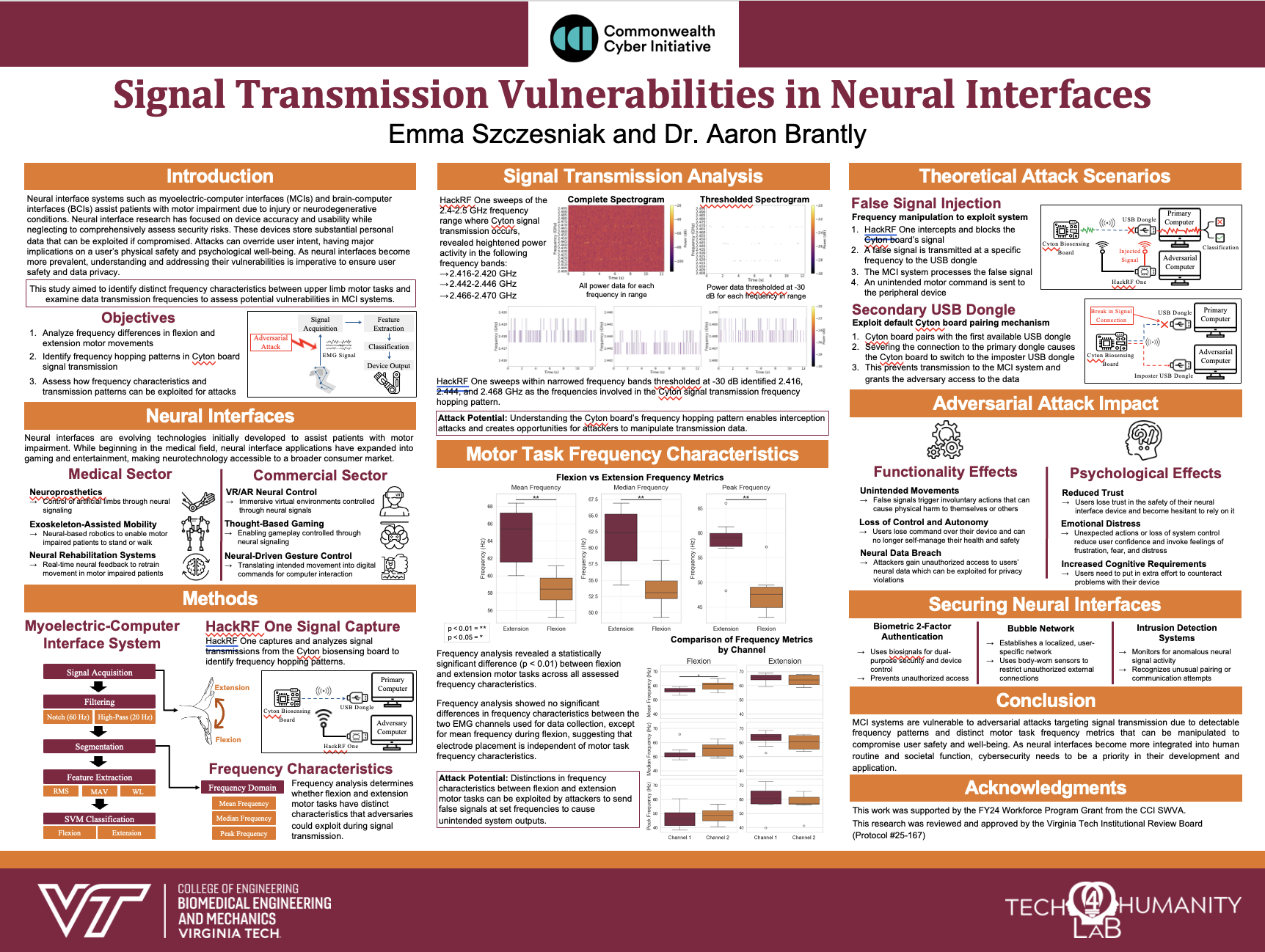The Tech for Humanity Lab blog is comprised of research and general interests posts from lab students and faculty.
-

Implementing AI in Music Recommenders and ethical concerns
By Kat Patten Abstract In 2022, the widespread use of generative AI has increased and since then it has been incorporated into our everyday lives. Not only can AI be used to look up simple questions, but it can be used to aid specific areas such as questions within a company, exercise tips, and…
-

Debunking Online Hitmen
Zoe Hess and Palen Kelly This paper will investigate the dark web, specifically the Onion Router (Tor) to explore what posts and websites relate to hiring a hitman. Is there a market related to contracting killing or violence? And is it easily assessable? While seemingly present in modern media through movies and tv series,…
-

How Does Political Repression in Iran Drive Dark Web Activity?
By Sutton Marks and Yancey Wegner Introduction On the topic human rights there have been numerous political protests in the country of Iran. Such protests have led to civil unrest and loss of lives, examples including Bloody November and the death of Mahsa (Jini) Amini in police custody. While citizens attempt justice against their…
-

Vendor Trust and Drug Pricing on Abacus: A Study of Methamphetamine, Cocaine, and Ketamine
By: Leah Cushing and Gracie Griffin This study explores the relationship between vendor trust and drug pricing within a major darkweb marketplace called Abacus. Focusing on methamphetamine, cocaine, and ketamine listings, the research examines whether higher levels of vendor trust, measured via reputation scores, positively impact higher drug prices. Using The Onion Router (Tor)…
-

Cybersecurity for Academics and Students
Join the Tech for Humanity Lab for a virtual workshop on how to protect your digital life, safeguard your research, and build responsible digital habits. When: November 17th, 2025 From: 10:30am – 12:00pm Where: https://virginiatech.zoom.us/j/88187329475 Event Overview This event seeks to empower students, faculty, and researchers with the knowledge and tools they need to…
-

Enhancing Cyber Threat Intelligence through Retrieval-Augmented Generation (RAG) Using a Knowledge-Aware AI Framework
By Muhammad Saiful Alam Introduction The increasing complexity of cyberattacks demands advanced tools capable of understanding and reasoning with evolving security information. Traditional detection systems utilizing static rule sets or signature-based methods often lag behind in adapting to the rapidly evolving tactics used by modern attackers. The latest development of Large Language Models (LLMs)…
-

Addressing Bias in AI Healthcare: Protecting Vulnerable Patient Populations
by Javaid Sofi Abstract AI’s integration into healthcare, while promising enhanced diagnostics and efficiency, carries a significant risk of amplifying health disparities affecting vulnerable populations. Bias arises from unrepresentative datasets (e.g., dermatology algorithms trained on lighter skin tones), cognitive biases in clinical labelling, and flawed proxies like zip codes conflating geography with health risk. Studies…
-

Signal Transmission Vulnerabilities in Neural Interfaces
by Emma Szczesniak Neural interface systems such as myoelectric-computer interfaces (MCIs) and brain-computer interfaces (BCIs) assist patients with motor impairment due to injury or neurodegenerative conditions. Neural interface research has focused on device accuracy and usability while neglecting to comprehensively assess security risks. These devices store substantial personal data that can be exploited if compromised. Attacks…
-

Generative AI Will Fail to Attract Us Because It Ignores What Makes Us Human
By Selim Tlili Selim Tlili has taught high school biology, chemistry and math since 2004. He began in the NYC public school system and moved to independent education in 2015. He is working on his first book in science education and is finishing his first movie. Read his work at selim.digital. I had an incredibly interesting lunchtime conversation…
-

Changing Trends in U.S. Digital Health Security
By Dr. Nataliya D. Brantly U.S. healthcare has changed significantly since the early 2000s. This change was spurred by a number of studies that documented and exposed systemic failures, inefficiencies, poor coordination, and inadequate patient-centered care.[1]High levels of medical errors in a clinical setting, contributing to the thousands of deaths annually, emphasized the need to…
